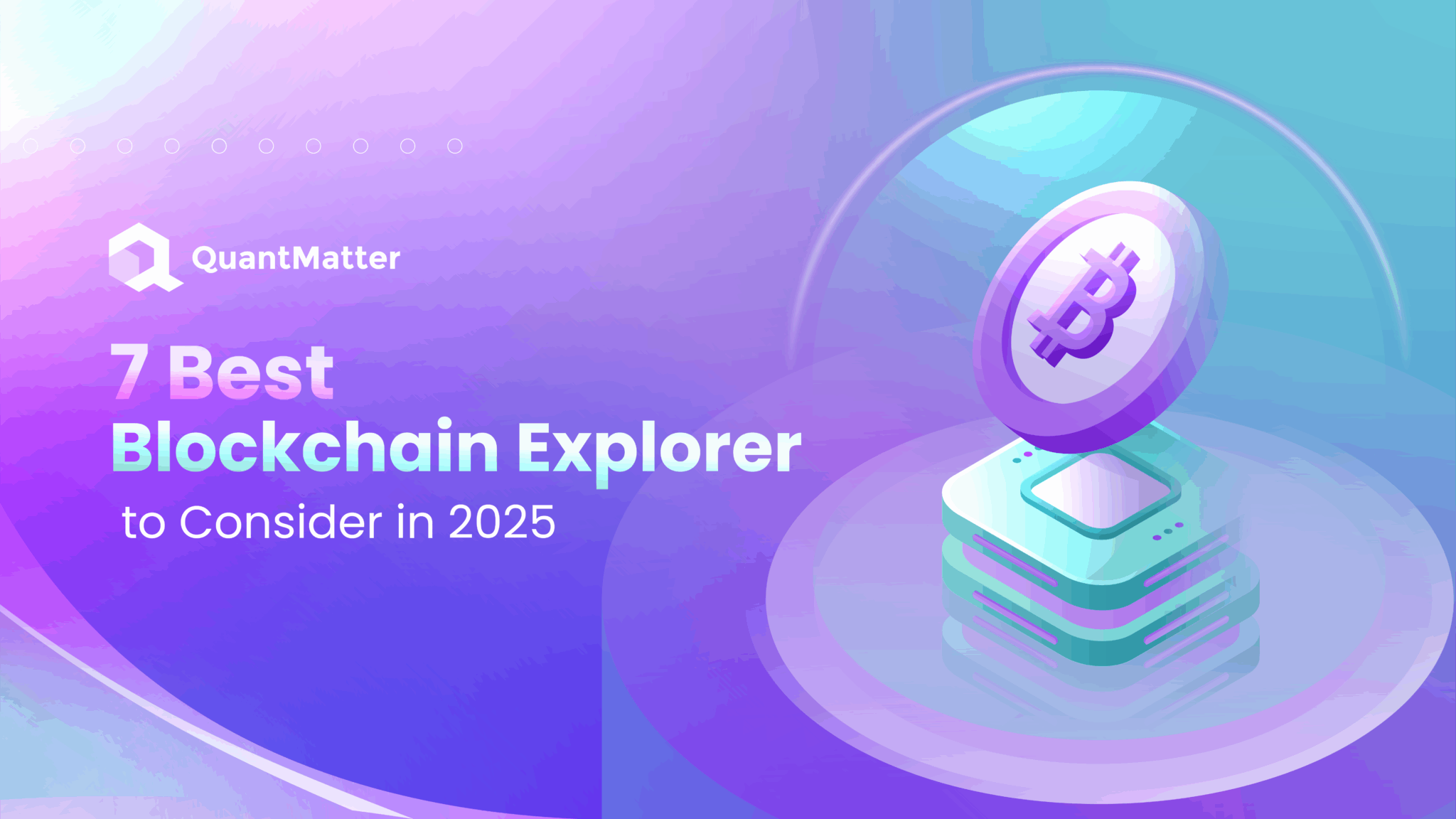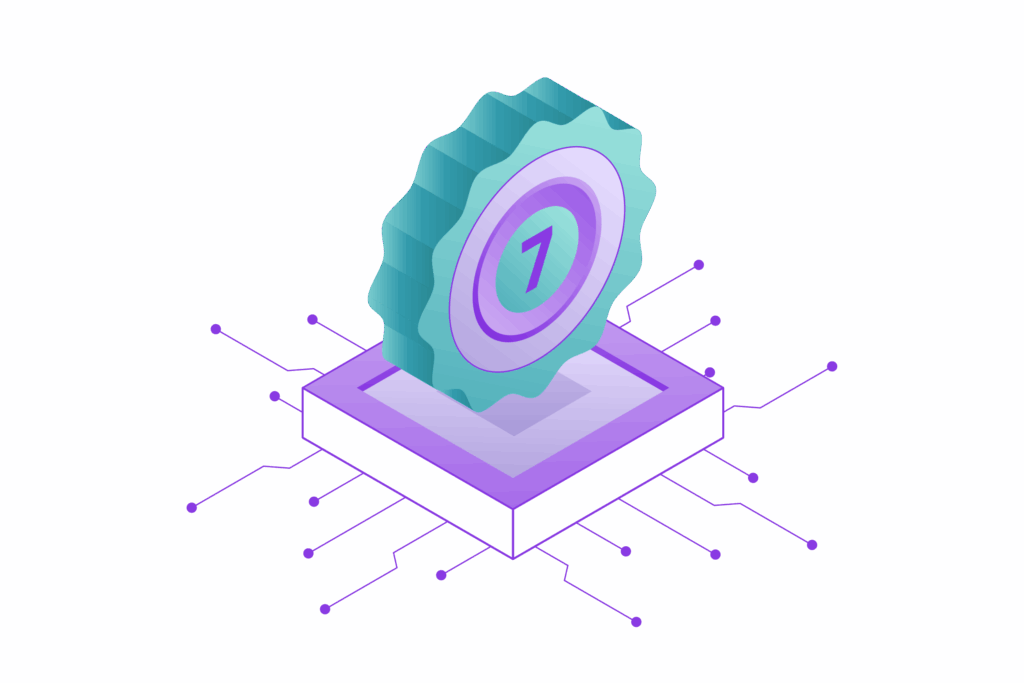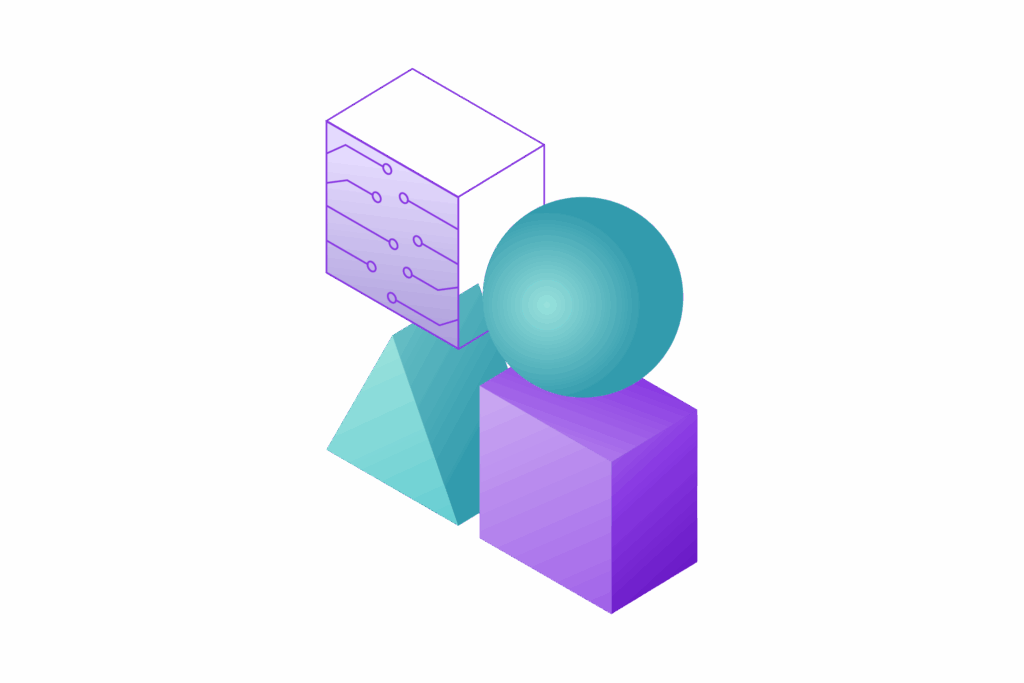
The blockchain world keeps growing. More people are trading, building apps, or just exploring what’s happening on-chain. With that growth comes the need to track activity clearly and easily. That’s where blockchain explorers come in.
A blockchain explorer lets anyone look at data on a public ledger. This can include checking wallet balances, verifying transactions, or following a token’s journey. Whether you’re an investor, developer, or just curious, you’ll probably use one at some point.
But not all explorers are the same. Some support multiple blockchains. Others focus on one chain but go deep. In 2025, you’ll want one that’s reliable, fast, and has good tools. Below are the 7 best blockchain explorers to consider, plus other things you should know before picking one.
Why Use a Blockchain Explorer?

Whether you’re new to crypto or a seasoned developer, understanding what’s happening on the blockchain is essential. A blockchain explorer gives you a clear window into the blockchain’s public ledger — making data visible, verifiable, and actionable.
At its core, a blockchain explorer helps you track and understand activity on a blockchain network. If you’ve ever waited on a transaction to go through or wondered why gas fees spiked, chances are you’ve checked an explorer. But it does more than just confirm transfers. Here are some of the key reasons people use them:
- Transaction tracking: You can see exactly when a transaction was sent, when it was confirmed, and where it ended up. This is helpful for both users and businesses handling crypto payments.
- Address lookup: Curious about what’s inside a wallet or how active it’s been? Explorers let you look up any public address to see balances, past transactions, and token holdings.
- Smart contract inspection: Developers rely on explorers to interact with smart contracts, check logs, view source code, and test function calls directly on-chain.
- Security checks: If you’ve received a suspicious token or want to double-check if a contract is legit, explorers can show you its creation history, activity, and whether it’s flagged by the community.
These tools bring transparency to a system that runs without intermediaries. Without blockchain explorers, most users would be left in the dark, unable to verify anything for themselves.
So whether you’re double-checking a payment, researching a DeFi protocol, or digging into on-chain data, a good blockchain explorer is one of the most useful resources you can have in crypto.
Also Read: How to Calculate Realized Volatility: Methods and Practical Examples
7 Best Blockchain Explorer to Consider in 2025

Here are some of the top contenders redefining blockchain exploration in 2025:
- HeLaScan – AI-powered explorer with real-time tracking for the HeLa Layer 1 chain
- Etherscan – Gold-standard for Ethereum and Layer 2 data with unmatched smart contract insight
- Solscan – Best for deep-dive DeFi and NFT activity on Solana
- Arbiscan – Ideal for developers and traders on the Arbitrum Layer 2 network
- Blockchair – Multi-chain analytics hub with privacy tools and advanced filtering
- Tokenview – Most versatile explorer with support for over 120 blockchain networks
- Blockchain.com Explorer – Trusted Bitcoin and Ethereum explorer for beginners and pros alike
Looking to track, verify, and explore blockchain data more efficiently in 2025? Here’s a closer look at the 7 best blockchain explorers leading the way this year. From powerful multi-chain tools to AI-enhanced platforms, these explorers make it easier than ever to dive into transactions, smart contracts, and on-chain activity—whether you’re a developer, trader, or just crypto-curious.
1. HeLaScan – AI-Powered Explorer for the HeLa Chain
HeLaScan stands at the forefront of blockchain exploration by integrating artificial intelligence into its platform. Specifically designed for the HeLa Layer 1 ecosystem, it offers real-time tracking of AI-executed transactions, passive income streams, and smart contract interactions. Users benefit from an intuitive dashboard that simplifies complex data, making blockchain interactions more accessible. The platform’s emphasis on AI integration positions it as a pioneer in the next generation of blockchain explorers. Its commitment to transparency and user-centric design makes it a top choice for those deeply involved in the HeLa ecosystem.
| Pros | Cons |
| AI integration for advanced analytics | Limited to the HeLa blockchain |
| Real-time tracking of AI-executed transactions | May have a learning curve for new users |
| Intuitive and user-friendly dashboard | Less established compared to older explorers |
| Focus on passive income stream tracking | Limited community support outside HeLa |
| Enhanced transparency within the HeLa ecosystem | Fewer third-party integrations |
2. Etherscan – The Gold Standard for Ethereum
Etherscan remains the premier explorer for the Ethereum network, renowned for its comprehensive data and reliability. It provides detailed insights into transactions, smart contracts, and wallet addresses. In 2025, Etherscan has expanded its capabilities by integrating support for Ethereum Layer 2 solutions like Arbitrum and Optimism, offering users a unified view of the Ethereum ecosystem. Its user-friendly interface and robust feature set make it indispensable for both developers and casual users. Etherscan’s commitment to transparency and continuous improvement solidifies its position as a trusted resource in the blockchain community.
| Pros | Cons |
| Comprehensive Ethereum data coverage | Limited to Ethereum and its Layer 2 solutions |
| Integration with Layer 2 networks | Can be overwhelming for beginners |
| User-friendly interface | Advanced features may require technical knowledge |
| Trusted and widely used in the community | Limited multi-chain support |
| Regular updates and feature enhancements | Some features may be redundant for casual users |
3. Solscan – The Powerhouse of Solana
Solscan is the go-to explorer for the Solana blockchain, known for its high-speed and low-cost transactions. It offers detailed insights into transactions, tokens, and DeFi activities, making it indispensable for Solana users. Solscan has evolved into a data intelligence platform, integrating alerts, social graphs, and Solana Name Service (SNS) support to provide users with a comprehensive view of on-chain identity. Its commitment to user experience and continuous innovation makes it a valuable tool for navigating the Solana ecosystem. Whether you’re a developer or an enthusiast, Solscan provides the tools needed to explore and understand Solana’s dynamic landscape.
| Pros | Cons |
| Detailed insights into Solana transactions | Limited to the Solana blockchain |
| Integration of alerts and social graphs | May have occasional performance issues |
| Support for Solana Name Service (SNS) | Interface may be complex for new users |
| Comprehensive DeFi activity tracking | Limited multi-chain capabilities |
| Regular updates and feature enhancements | Some features may be redundant for casual users |
4. Arbiscan – Exploring the Arbitrum Ecosystem
Arbiscan specializes in the Arbitrum Layer 2 network, providing users with detailed information on transactions, smart contracts, and address activities. Its accuracy and speed make it essential for those engaging with the Arbitrum ecosystem. Arbiscan’s interface offers a native feel for a non-native environment, ensuring users can navigate the platform with ease. As Arbitrum continues to gain traction, Arbiscan’s role in providing transparency and data becomes increasingly vital. For developers and users alike, Arbiscan is a trusted resource for exploring the Arbitrum network.
| Pros | Cons |
| Specialized for the Arbitrum Layer 2 network | Limited to the Arbitrum ecosystem |
| Accurate and fast transaction tracking | May lack some advanced features |
| User-friendly interface | Less community support compared to larger explorers |
| Essential for Arbitrum developers | Limited multi-chain support |
| Regular updates and improvements | May have a learning curve for new users |
5. Blockchair – Multi-Chain Analytics and Privacy Tools
Blockchair has evolved into a robust platform offering data analysis, privacy tools, and support for multiple blockchains, including Bitcoin, Ethereum, and Litecoin. Its user-friendly interface and comprehensive data make it a valuable resource for blockchain analysis. Blockchair’s commitment to privacy and multi-chain support sets it apart from many other explorers. Users can benefit from its advanced search capabilities and customizable data views. Whether you’re analyzing transactions or exploring blockchain data, Blockchair provides the tools needed for in-depth exploration.
| Pros | Cons |
| Supports multiple blockchains | May be overwhelming for beginners |
| Advanced data analysis tools | Some features may require technical knowledge |
| Emphasis on user privacy | Interface may be complex for casual users |
| Customizable data views | Limited support for newer blockchains |
| Regular updates and feature enhancements | Some features may be redundant for casual users |
6. Tokenview – Comprehensive Multi-Chain Explorer
Tokenview supports over 120 blockchains, providing extensive data on transactions, addresses, and blocks. It’s particularly useful for developers and users who interact with multiple blockchain networks. Tokenview’s commitment to supporting a wide range of blockchains makes it a versatile tool in the blockchain space. Users can benefit from its comprehensive data coverage and user-friendly interface. Whether you’re exploring Bitcoin, Ethereum, or emerging blockchains, Tokenview offers the insights needed for thorough analysis.
| Pros | Cons |
| Supports over 120 blockchains | Interface may be complex for new users |
| Comprehensive data coverage | Some features may require technical knowledge |
| Useful for developers and multi-chain users | Limited community support for certain blockchains |
| Regular updates and feature enhancements | May have occasional performance issues |
| User-friendly interface | Some features may be redundant for casual users |
7. Blockchain.com Explorer – Trusted Bitcoin and Ethereum Explorer
Blockchain.com’s explorer offers reliable and straightforward access to Bitcoin and Ethereum blockchain data. Users can view transaction histories, block details, and wallet information, making it a trusted tool for both beginners and experienced users. Its clean interface and focus on core functionalities ensure a seamless user experience. Blockchain.com has been a staple in the blockchain community, known for its reliability and ease of use. For those seeking a straightforward and dependable explorer, Blockchain.com remains a top choice.
| Pros | Cons |
| Reliable access to Bitcoin and Ethereum data | Limited to Bitcoin and Ethereum |
| User-friendly interface | Lacks advanced features for developers |
| Trusted and widely used in the community | Limited multi-chain support |
| Focus on core functionalities | May be too basic for advanced users |
| Regular updates and maintenance | Some features may be redundant for casual users |
In conclusion, the blockchain explorers listed above offer a range of features tailored to different user needs. Whether you’re a developer seeking advanced analytics or a casual user wanting to track transactions, there’s an explorer suited for you. As blockchain technology continues to evolve, these tools will play a crucial role in ensuring transparency, security, and accessibility within the decentralized ecosystem.
How to Choose the Right Explorer

With so many blockchain explorers out there, it’s important to choose one that fits your specific needs. Whether you’re just checking the status of a transaction or managing complex smart contracts, the right tool can make your experience much smoother. Not all explorers offer the same features, so taking a moment to evaluate your options is worth it.
The “best” explorer depends on what blockchain you’re using and what kind of information you’re looking for. Some are built for depth and developer tools, while others prioritize ease of use and visual clarity. Here are a few key things to consider before settling on one:
- Supported chains: If you use multiple networks—like Ethereum, Solana, and BNB Chain—you’ll benefit from a multi-chain explorer like Blockchair or OKLink. These give you a centralized place to check all your transactions and wallet activity across chains.
- Data depth: For smart contract interactions, DeFi use, or dApp development, you’ll want an explorer that offers access to internal transactions, emitted logs, and full contract history. Etherscan, for example, is well-known for this level of detail.
- User interface: If you’re new to blockchain, a clean and simple layout can save you time and frustration. Developers, on the other hand, might prefer more advanced dashboards and access to testnet data.
- Extra tools: Features like gas trackers, token stats, NFT insights, API access, or address alerts can make a big difference if you’re using crypto actively. Some explorers also let you bookmark wallets or set custom notifications.
If you’re only checking transactions now and then, nearly any reliable explorer will do. But if you’re working on a blockchain project, interacting with smart contracts, or managing a portfolio, you’ll want an explorer that offers more depth and flexibility.
Ultimately, the best blockchain explorer is the one that matches how you use crypto. Try out a few, see what works, and keep your favorite bookmarked. It’s a small choice that can save you a lot of time and hassle down the road.
Also Read: Scalars, Vectors, Matrices, and Tensors: The Building Blocks of Quantitative Finance
Security and Privacy Considerations
Blockchain explorers are safe to use in general, since you’re only viewing publicly available data. But like with any online tool, it’s important to stay alert and avoid common pitfalls—especially as phishing scams and spoofed websites become more sophisticated.
- Don’t click random links: Always double-check the URL before using an explorer. Some malicious sites mimic trusted explorers to trick users into revealing private keys or connecting wallets. Bookmark the official site to avoid this risk.
- Avoid linking wallets directly: While some explorers offer extra features if you connect your wallet (like portfolio tracking or transaction signing), it’s safer to use them in read-only mode unless you fully trust the platform.
- Be mindful of public data: Remember, everything on-chain is permanent and visible. If your wallet has ever been linked to your name or email—even indirectly—anyone can trace your activity, tokens, and interactions.
If privacy is a top concern, look for explorers that offer anonymized views or privacy-focused insights. For example, Blockchair highlights metadata and offers tools that help users understand what data they’re exposing.
Being cautious doesn’t take much effort, but it goes a long way in protecting your information—especially in a space where transparency is both a feature and a risk.
Conclusion
Blockchain explorers play a key role in how we interact with and understand blockchain networks. They make it possible for anyone to verify transactions, track wallet activity, and analyze contract behavior—all without needing special access or tools.
As crypto adoption grows, the need for clear, trustworthy access to blockchain data will only increase. Whether you’re a casual user, developer, investor, or researcher, having a good explorer in your toolkit makes the crypto experience more transparent and informed.
The tools available today are already powerful, and they’re continuing to evolve. From deeper analytics to better user interfaces and added privacy features, explorers are becoming more accessible and useful for everyone. Whichever one you choose, it’s a small step that can give you much more control over how you navigate the blockchain world.
Disclaimer: The information provided by Quant Matter in this article is intended for general informational purposes and does not reflect the company’s opinion. It is not intended as investment advice or a recommendation. Readers are strongly advised to conduct their own thorough research and consult with a qualified financial advisor before making any financial decisions.

I'm Carina, a passionate crypto trader, analyst, and enthusiast. With years of experience in the thrilling world of cryptocurrency, I have dedicated my time to understanding the complexities and trends of this ever-evolving industry.
Through my expertise, I strive to empower individuals with the knowledge and tools they need to navigate the exciting realm of digital assets. Whether you're a seasoned investor or a curious beginner, I'm here to share valuable insights, practical tips, and comprehensive analyses to help you make informed decisions in the crypto space.
- Carinahttps://quantmatter.com/author/carina/
- Carinahttps://quantmatter.com/author/carina/
- Carinahttps://quantmatter.com/author/carina/
- Carinahttps://quantmatter.com/author/carina/
